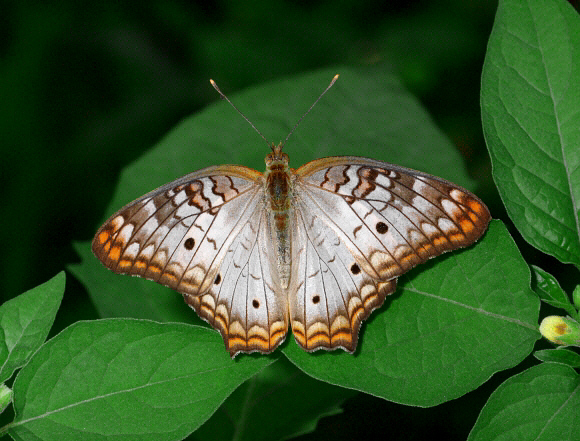
Introduction
The Nymphalinae includes many of the most well known and beautiful Palaearctic butterflies such as the Red Admiral Vanessa atalanta, Painted Lady Vanessa cardui, Camberwell Beauty Nymphalis antiopa, Comma Polygonia c-album, and Peacock Inachis io. Among the neotropical representatives are Colobura, Smyrna, Napeocles, Siproeta, Baeotus, Historis, Junonia, Anartia and Hypanartia.
The genus Anartia is closely allied to Junonia and its Afro-Oriental equivalent Precis and shares their liking for sunny open habitats in disturbed woodland.
There are 5 Anartia species of which jatrophae is the commonest and most widespread. The others are lyrtea from Haiti, chrysopelea from Cuba, fatima from central America and the beautiful black, red and white amathea from mainland South America.
When freshly emerged jatrophae has a beautiful mother-of-pearl luminescence that is difficult to reproduce in a photograph, but after only a short while the colours fade to a dull greyish-white.
Anartia jatrophae is distributed from the southern USA to Bolivia and Argentina. It is also found on most Caribbean islands.

Habitats
This species is found in disturbed habitats such as gardens, forest clearings, orchards, farmland and grassy riverbanks. It is primarily a lowland insect, but occurs up to an altitude of about 1500m.
Lifecycle
The eggs are ribbed, yellowish-green in colour, and laid singly on leaves of Blechum, Ruellia and other Acanthaceae; also on Bacopa and Lindernia ( Scrophulariacae ) and Lippia ( Verbenaceae ).

Adult behaviour
This is a sun-loving species. It is active mainly in the mornings when it can be seen basking on the ground or on low foliage. Later in the day when temperatures rise it rests in semi-shaded situations at the forest edge, or sits in open sunlight with the wings held erect. In the late afternoon when the temperature begins to dip, the butterflies commonly bask at the top of coarse grasses and herbage.
